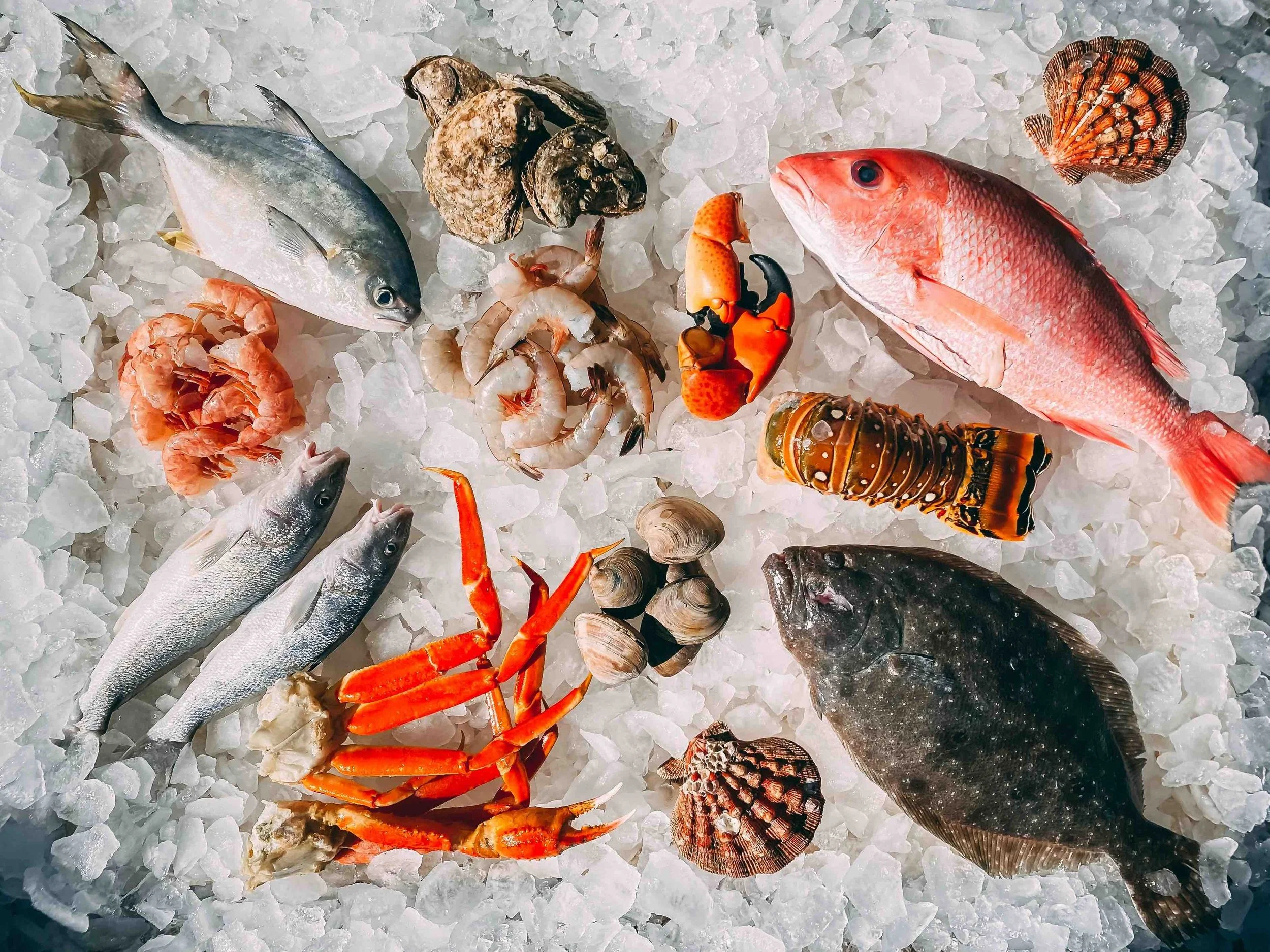An expanding role for seafood
SUPERMARKET NEWS | APRIL 2025
It's time to think outside of the seafood box.
That can be a fruitful merchandising message as retailers are in a position to boost sales by demonstrating seafood’s role as a side dish, appetizer, ingredient, and snack instead of primarily being a center-of-the-plate option, analysts said.
A focus on increasing the consumption of seafood in various dayparts also presents growth opportunities. That includes in the morning, as 58% of consumers indicate that they have seafood for breakfast less than once a month, according to the Power of Seafood 2025 report, published by Arlington, Va.-based FMI—The Food Industry Association.
In a nationally representative shopper survey for the report, 53% and 61% of respondents, respectively, also indicated that they have seafood snacks and appetizers less than once a month.
“Seafood works well as a supporting ingredient in anything from salads and soups to rice dishes and similar applications,” said Maeve Webster, president of Menu Matters, an Arlington, Vt.-based food industry consulting firm. “Unlike all of the innovations within burgers and sandwiches, fish have been underleveraged and could create unique solutions and innovative dishes.”
The incorporation of fish bases in such items as dips and spreads also can boost sector sales, she said, adding that it is important to educate shoppers about such options and “give them permission to experiment. That includes making unique applications less confronting and more accessible to the consumers who are less comfortable with seafood.”
Put seafood in the spotlight
Publicizing the use of seafood in comfort foods, as well as in recipes that traditionally feature meat and poultry, such as casseroles, can also trigger more activity, said Anne-Marie Roerink, president of 210 Analytics LLC, a San Antonio-based market research and marketing strategies firm.
Providing details on seafood dishes that consumers can prepare quickly and easily, including with frozen products, will add further appeal, she said, noting that seafood preparation “easily beats most meat selections,” in simplicity, “but that is not something that consumers typically think about.”
Making seafood highly visible to shoppers can also enhance interest, and that includes showcasing selections both in and outside of seafood departments, Roerink said. Retailers, for instance, can situate refrigerated cases with seafood throughout a store while also offering items in the prepared deli case.
Boomers and higher income consumers who are comfortable preparing meals at home are two of the main audiences for additional seafood uses, and younger customers who frequently eat sushi are a potentially strong target too, she said. “Sushi can get shoppers into the portal and become a gateway to an appetizer or side dish,” Roerink said.
Spurring interest in the myriad roles of seafood is still a challenge, she said, noting that there is much less top-of-mind awareness compared to meat and poultry. “The most important thing for seafood is to have the same visibility,” Roerink said.
While merchandisers can enhance recognition with advertisements, product promotions, and store displays, “it must start with retailers and the seafood industry being very engaged in ideating for the consumer and giving the idea that seafood needs to be part of the weekly meal line-up and not necessarily for dinner,” Roerink said. “Let shoppers know there are other options as well.”
Yet, with 2024 seafood revenues totaling about $8 billion, versus approximately $105 billion for meat, it will be difficult to entice many retailers to devote more energies to the seafood category, she said.
“Because of the household penetration differences between meat and seafood, it is likely that meat will also command the very valuable front of store space in which to deploy secondary displays,” Roerink said.
Fear of the unknown
Merchandisers must also overcome the reluctance of many consumers to change their consumption patterns and consider purchasing novel items for new occasions. Twenty-four percent of shoppers, for instance, said they buy the same types of seafood to prepare at home every time, and 36% indicated that they buy just a few types and do not try anything new or different, the Power of Seafood survey found.
Offering seafood at an attractive price will be a strong enticement for shoppers to eat seafood more frequently and for more occasions, analysts said. Thirty-one percent of consumers in the Power of Produce survey indicated that they would select center-of-the-plate seafood if all meal prices were the same, versus 29% for beef and 28% for chicken.
“There are so many seafood opportunities because of the greater amount of at-home meal preparation, and that includes preparing appetizers for entertaining and having seafood for lunch” because of the larger number of shoppers working at home, Roerink said. “Variety is the superpower of the grocery store so getting consumers to engage in different proteins will likely get them to create different seafood selections at home.”


